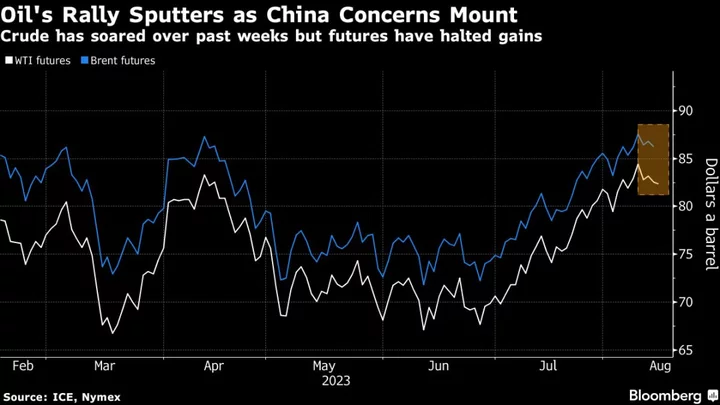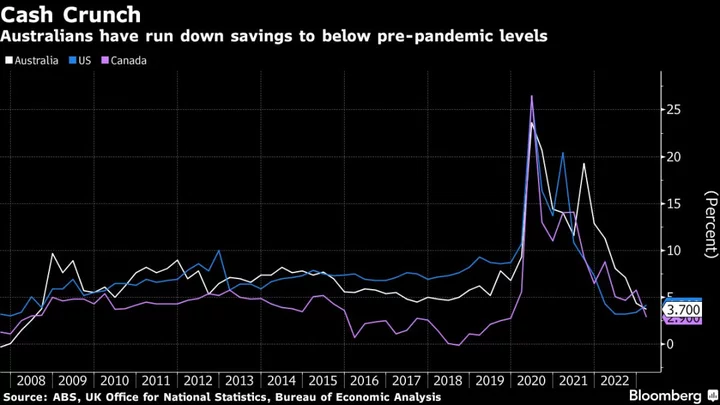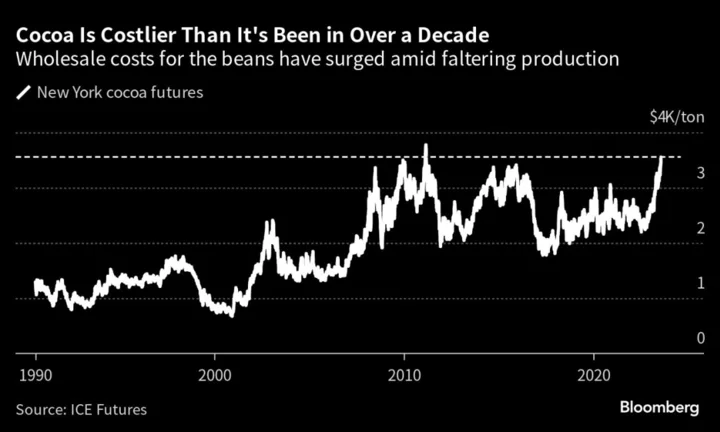Oil was steady after a loss on Monday on concerns around the health of the Chinese economy and an elevated dollar.
West Texas Intermediate traded near $83 a barrel after falling 0.8% in the previous session. Chinese data released Tuesday, including industrial output, retail sales, and fixed-asset investment, fell short of expectations, underscoring the problematic outlook for the world’s largest crude importer.
Still, the figures also showed apparent oil demand in July was up more than a fifth from a year earlier. China’s central bank unexpectedly cut a key interest rate by the most since 2020 to bolster the economy ahead of the data release.
Oil has been surging since late June as OPEC+ kingpins Saudi Arabia and Russia cut supplies, tightening the physical market and helping to drain inventories, but the rally has faltered over the last few sessions. The International Energy Agency estimates global demand has been running at a record pace, aided in part by Chinese petrochemical activity.
Read More: Oil’s Push Toward $90 Gets Lift From Physical Markets Everywhere
Further weakness in Chinese data signals “more demand pressures,” said Charu Chanana, a market strategist at Saxo Capital Markets Pte. Global benchmark Brent will likely hold between $80 to $90 this quarter, she said.
A gauge of the dollar was steady on Tuesday after closing on Monday at the highest level since June 7 following a three-day advance. A stronger greenback makes commodities priced in the currency less attractive.
The US and UK, meanwhile, both posted warnings of an increased risk to vessels near Iranian waters in the Strait of Hormuz, a strategic waterway for oil transit. Iran has seized a number of tankers over recent months.
To get Bloomberg’s Energy Daily newsletter direct into your inbox, click here.









